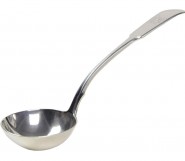Lot #6 - Fred Williams
-
Auction House:Deutscher and Hackett
-
Sale Name:Modern + Contemporary Fine Art - Timed Online Auction
-
Sale Date:06 May 2020 ~ Bidding ends at 7pm (AEST)
-
Lot #:6
-
Lot Description:Fred Williams
(1927 – 1982)
Lamb, 1969
oil on canvas
51.0 x 62.0 cm
signed lower right: Fred Williams; artist's label attached verso with artist's name, title, date, medium, and dimensions
Related Work/s: 'Schneider Cutting the Meat,' 1967, gouache on paper, 56.5 x 57.5 cm, illus. in McCaughey, P., 'Fred Williams 1927 – 1982,' Murdoch Books, revised edition, 1996, Sydney, fig. 141, p. 197; 'Lamb,' 1968, gouache on paper, 40.0 x 53.5 cm, in the collection of the National Gallery of Victoria, Melbourne; 'Legs of Lamb,' 1968, oil on canvas, 71.5 x 71.5 cm, illus. in McCaughey, P., 'Fred Williams 1927 – 1982,' Murdoch Books, revised edition, 1996, Sydney, pl. 103, p. 197; 'Lamb in meat room, Tibooburra I, '1968 – 70, oil on canvas, 92.0 x 106.4 cm, in the collection of the National Gallery of Australia, Canberra, illus. in Mollison, J., 'A Singular Vision: The Art of Fred Williams,' Australian National Gallery, Canberra, 1989, p. 124 -
Provenance:Rudy Komon Gallery, Sydney (label attached verso, stock no. 3047); The Estate of Rudy Komon, Sydney; Ray Hughes, Sydney; The Estate of Ray Hughes, Sydney
-
Notes:Amongst Fred Williams’ vast body of work consisting mostly of landscapes, only a handful of still life paintings of cuts of meat subsist today. Painted between 1968 and 1970, at the height of the artist’s powers, concurrent with his sublime ‘Fire’ and minimalist ‘Australian Landscape’ series, this group of oil paintings of varied formats, including 'Lamb', 1969, all sprung from one specific episode in Williams’ travels. In October 1967, Williams accompanied fellow artist Clifton Pugh to Tibooburra in the far North-Western corner of New South Wales, recording his observations of the landscape and its inhabitants in dozens of gouache sketches. During his stay at this desolate and remote outpost, where springtime temperatures could regularly climb to over 40 degrees Celcius, Williams stumbled upon an unassuming commonplace scene, the visual richness of which would sustain and inform a distinct series of ‘meat pictures’, including masterpieces such as 'Lamb in Meat Room, Tibooburra I,' 1968 -1970, held in the collection of the National Gallery of Australia. On the first of November, Williams recorded in his diary that the heat was such that he was forced to find alternative indoor subject matter, resorting to painting the ‘meat hanging in the outhouse’. The artist remarked ‘[I] am making good progress with it but they want to take the meat away – [I] manage a quick sketch – Schneider the aboriginal [butcher] goes into the outhouse to chop meat & I will try & paint a picture of this at home’.1 Back in Melbourne, a full year later, in November 1968, Williams finally began sifting through his sketches and gradually composed oil paintings from the most successful of his gouache studies. 'Lamb', 1969, and its related works, although painted in the comfort of the studio and with ample time for layering and drying of thick impasto brushstrokes, retains the sense of immediacy of the artist’s time-sensitive initial works. Furthermore, Williams was attune to the historical and iconographic significance of this subject matter, marking in his notebook several years earlier that the Great Masters such as Rembrandt, Francisco de Goya, Paul Cézanne and Paul Gauguin had all painted still lives of butchers’ counters and tables set with fresh cuts of meat – postcards of which were in the artist’s possession.2 Williams’ version of this classic theme, however, contains very little of the moral and socio-political subtext of these still lives of the past, delighting solely in the chromatic and formal qualities of his subject.;; 'Lamb' is a vigorously modelled still life, its sparse composition and rich palette almost identical to that of 'Legs of Lamb', 1968, qualified by Patrick McCaughey in his 1987 monograph as ‘a masterpiece’. 3 The importance of this painting is tightly bound to its place amongst Williams’ wider oeuvre. This stark and intimate work has a warm and almost abstract composition –waxy swathes and licks of oil paint, applied sculpturally with palette knives, are placed cleanly and spontaneously upon the monochrome ground – a tangible reality conjured from few marks, which leave the ground partially visible between brushstrokes. While in his landscapes Williams was famously depicting a terrain divorced from linear perspective, with continuous and uninterrupted planes of landscape views, his still life paintings of meat are equally untethered to a structured pictorial space. The freshly cleaved cuts are suspended in real life, swinging on hooks in a cold room in rural NSW, but also on the canvas, floating upon a generous and vast rich clay-red ground, chromatically recalling the soil of Tibooburra. 1. The artist’s notebook, quoted in Mollison, J., 'A Singular Vision: The Art of Fred Williams', Australian National Gallery, Canberra, 1989, p. 123; 2. Mollison, J., op. cit., pp. 123 – 124; 3. McCaughey, P., 'Fred Williams 1927 – 1982', Murdoch Books, revised edition, 1996, Sydney, p. 197 LUCIE REEVES-SMITH
-
Estimate:A$35,000 - 45,000
-
Realised Price:
-
Category:Art
This Sale has been held and this item is no longer available. Details are provided for information purposes only.










